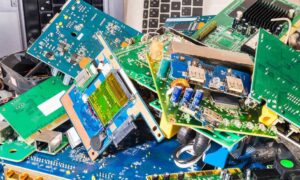Six Reasons for PCB Failures
2022-10-15
Just like the age of people, everything has its shelf life. PCB is the lifeblood of the electronic equipment we use, many devices rely on the circuit board, so we must pay attention to the board failure. PCB failure and many reasons, from production in the hands of the final customer use, any one of the links can go wrong. Through this article to understand the common causes of PCB failure, you can easily prevent possible future PCB failure problems.
PCB failure common 6 reasons
-
PCB defects
Defects are the most common cause of PCB failure, usually generated during the PCB assembly process. Circuit boards are very sensitive to electrostatic discharge (ESD), static electricity generated by thousands of volts can easily damage the PCB components. Other potential defects are unaligned layers, short circuits, cross signals, etc. Reliable PCB manufacturers back to take a variety of preventive measures to eliminate electrostatic discharge on the production floor.
-
Component problems
Component burn-in is a PCB defect, notably it is the main cause of PCB failure. This requires not only the replacement of parts, there is the possibility of repairing the entire board. Causes of component burn-in include extreme heat, components spaced too close together, the board is not properly connected, etc.
-
Environment
Circuit boards are also sensitive to external factors. For example, hair, dust, liquids, fibers and other foreign objects in contact with the board can have an adverse effect on the product. In addition, excessive heat and humidity may cause the PCB to expand and thus warp and damage the solder joints.
-
Solder problems
Solder connects components and circuit boards and is a key component in the PCB process. If the solder is contaminated, or contains too much moisture, it may cause the board to short circuit. There are several common solder defects.
-Open
-Excessive solder
-Component displacement
-Solder bridges
-
Human error
During the production process, there may be some human errors that lead to PCB failures.
-Misreading the schematic
-Miss installation of components
-Bad soldering
-
Equipment aging
Every device has its life cycle, after reaching the life cycle may begin to fail, it is a wise move to replace the PCB with a new one, or use a small part of the new one to repair the board.
How to fix PCB failures?
Ultimately, replacing components and redesigning products is part of the PCB business. Having a partner that understands the details of PCB testing, assembly and remanufacturing can save you time and money.
Choose KingPCB as your PCB supplier, we have a professional team to assist you to better complete your PCB project, contact us now for more information about quotes!



